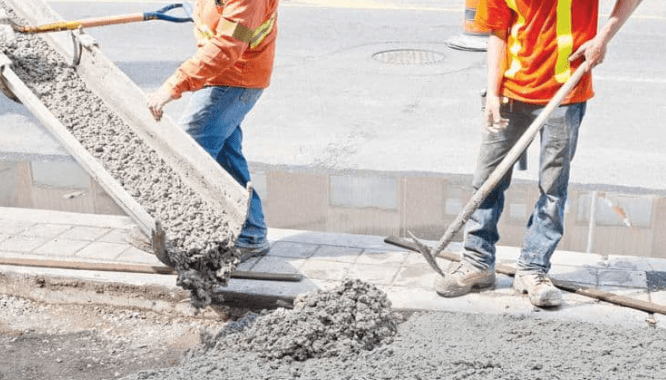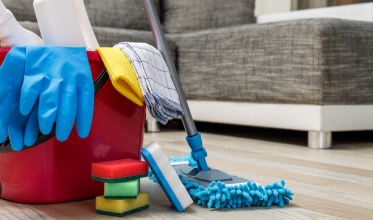
Are you dealing with cracks and damage in your concrete? It can be a frustrating experience, but don’t worry; you have the power to repair it.
With the right guidance and materials, you can get back in control of your project. Concrete Repairs 101: Tips for Fixing Cracks and Damage will give you a comprehensive overview of what needs to be done.
We’ll cover assessing the damage, preparing the surface, filling cracks and holes, patching the surface, and applying a sealant.
So let’s get started on restoring your concrete!
Assess the Damage
Carefully assessing the scope of the problem is essential for successful resolution. Especially when it comes to concrete driveway repair, you must first identify what the problem is before attempting to find a solution.
Start by taking a close look at the area that needs repair and evaluating potential solutions. Make sure to take into account factors such as cost, environmental impact, and time investment when identifying problems and evaluating solutions.
Do your research so that you understand which type of material will work best in your particular situation. If necessary, consult with an expert who may be able to provide valuable insight into how to best address any issues with your concrete structure.
With proper assessment and an informed approach, you can move forward with confidence in achieving a successful outcome for your concrete repair project.
Prepare the Surface
Thoroughly prep the surface – don’t take any shortcuts – to ensure a smooth, long-lasting repair, like a stitch in time saves nine!
Before beginning any concrete repair project, it’s important to gather all of the necessary materials and tools. This can include patching compound, putty knives, trowels, sandpaper, and other supplies, depending on the type of damage that needs to be repaired. You may also need a hammer or chisel if there are large chunks of concrete that need to be broken up before you begin prepping the surface.
Once all of your materials and tools have been gathered together, it’s time to start prepping the damaged area for repairs.
Start by using a wire brush or metal scraper to remove any loose pieces of material from the area. After this is done, use a vacuum cleaner or broom with stiff bristles to clean away any dirt and debris from the surface.
When finished cleaning up, the area around the damage site should be free from dust particles so that it will provide an even surface for applying patching compound and other materials needed for repairs.
Fill Cracks and Holes
Repairing cracks and holes quickly is key to ensuring a lasting fix! Identifying the problem areas is the first step in fixing concrete surfaces. This includes examining for any existing damage such as:
– Cracks:
– Hairline fractures
– Wide cracks
– Holes or pits:
– Smaller than 1/2 inch
– Larger than 1/2 inch
Once the problems are identified, you’ll be able to estimate repair costs and determine what type of materials and tools are needed for the job.
Use an appropriate concrete repair material to fill in holes or wide cracks, using a trowel to spread it out evenly over the damaged area. For hairline fractures, use a sealant that can penetrate deep into those small fissures. Make sure you apply an even layer of sealant and allow it to completely dry before walking on it.
With proper application, your concrete repairs will last longer while also preventing additional damage down the line!
Patch the Surface
You’re ready to tackle your concrete repairs and you’re looking for the best way to do it.
Using a concrete patching compound is an easy and cost-effective way to fill in cracks and other surface damage.
Applying a concrete resurfacer is another option that will provide a smooth, uniform look after patching areas of damaged or cracked concrete.
Using a concrete patching compound
To ensure a successful result, you’ll want to carefully apply the patching compound. Before doing so, make sure to remove any debris such as dirt, dust or contaminants from the surface of the concrete repair area. If this isn’t done properly, it can interfere with the adhesion of the patching compound and cause a poor finish.
Using a suitable trowel, begin spreading out enough of the patching compound evenly over the damaged section of concrete until it reaches an even thickness throughout. Make sure to press down firmly while applying it to ensure proper adhesion.
After letting it sit for several minutes, use a damp cloth or brush to test adhesion before proceeding with further repairs. This will help ensure that your concrete repair job ends up looking nice and smooth after it’s complete.
Applying a concrete resurfacer
If you want your concrete surface to look brand new again, applying a resurfacer is the way to go!
To begin, it’s important to properly clean and prepare the surface using appropriate cleaning tools. You’ll need to remove any debris, dirt or other materials that could interfere with the resurfacing process.
Once the surface is prepped, be sure to check for any holes or cracks that may need filling before you start. The resurfacer itself should be applied according to manufacturer instructions, but generally speaking you’ll spread it evenly on the concrete using a trowel and/or squeegee depending on desired texture.
Be sure that your application movements are consistent so as not to create uneven surfaces. Allow the resurfacer ample time to dry so it can achieve maximum strength and durability before use or walking traffic resumes over its surface.
Apply a Sealant
Sealing up the damage is like patching a hole in your heart – don’t let it linger any longer.
The key to fixing concrete cracks and damage is selecting the right sealant for the job. This requires research, as there are several types of sealants available on the market, each designed to serve different purposes.
Selecting a sealant that will work best for your project can be done by considering factors such as: durability, flexibility, water resistance, and adhesion. Make sure you choose a sealant with high durability that can withstand harsh weather conditions and heavy traffic. Also, select a sealant that can stretch or move with changes in temperature or humidity without cracking or breaking. Pick a sealant that can resist water infiltration and moisture penetration. Look for a product with strong adhesion properties so it bonds well to concrete surfaces without peeling off or wearing away quickly.
Once you have selected the right sealant, you need to apply it using proper sealing techniques in order to ensure maximum effectiveness and longevity of repairs. Start by cleaning the surface thoroughly with soap and water before applying the sealant using appropriate tools such as brushes, rollers, trowels, or sprayers depending on what kind of application method works best for your project. Allow enough time between coats so each layer has time to dry completely before adding additional coats if necessary.
Finally, paying attention to detail when sealing concrete cracks and damage is essential as even small flaws can lead to bigger problems down the road if left unchecked.
Conclusion
You’re now ready to complete your concrete repairs! You have the knowledge and tools to fill cracks, patch holes, and apply a sealant.
By following these steps, you can extend the life of your concrete surface. Keep in mind that prevention is the best approach; take care of your concrete surfaces from day one by regularly inspecting for any signs of damage.
With regular maintenance and proper repair techniques, you’ll be sure to keep your concrete looking its best for years to come!



